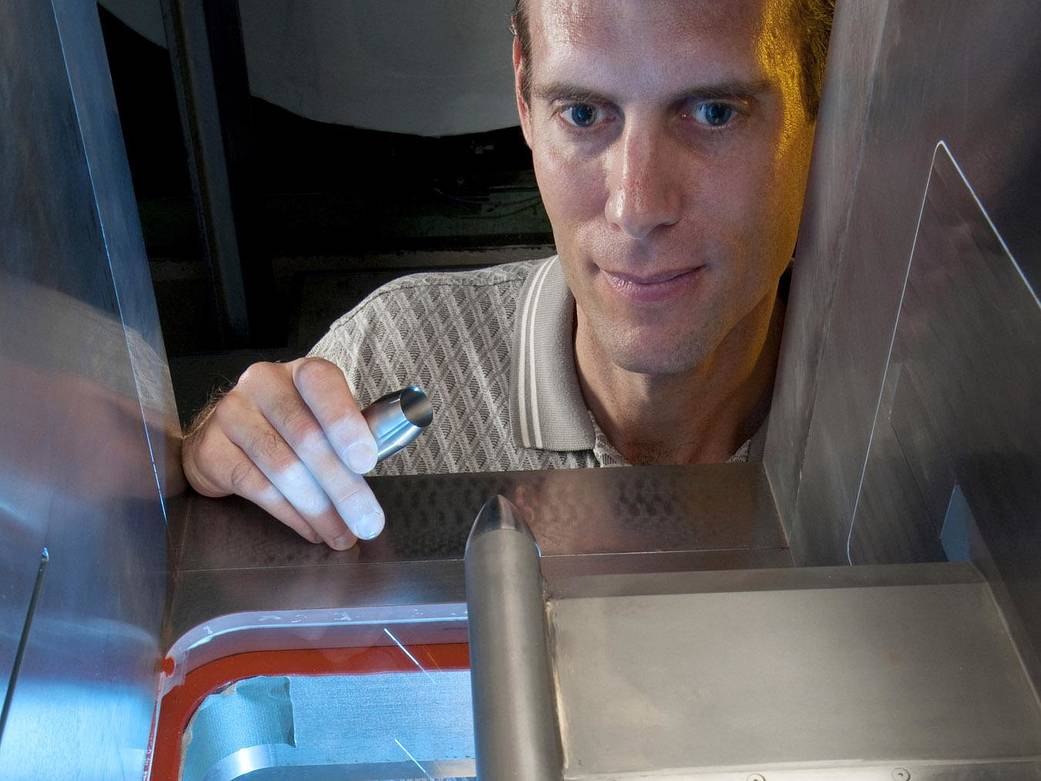
Supersonic aircraft create a substantial sonic boom, meaning that they can’t fly over populated areas without creating an intense noise disruption. NASA has been investigating ways to decrease this noise, which could revolutionize the way we fly.
Ray Castner, an aerospace engineer in the Inlet and Nozzle Branch at NASA’s Glenn Research Center, has been testing nozzle concepts with the goal of dramatically reducing noise produced by supersonic aircraft. Castner and his team tested a small scale exhaust nozzle in the 1-by 1-Foot Supersonic Wind Tunnel at Glenn. Pressurized air was supplied to the nozzle, which was tested at simulated flight conditions of Mach 2. Early results are promising, and suggest that changes in pressure in the nozzle affect the sonic boom signature.
Image Credit: NASA
Photographer: Michelle M. Murphy (Wyle Information Systems, Inc.)


























